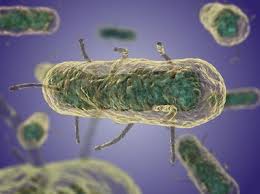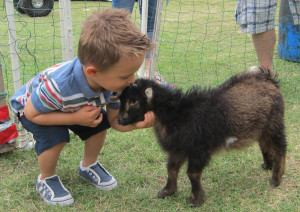The kids in Idaho are alright. Thanks to University of Idaho’s Josh Bevan and the rest of the IFT Intermountain section, I’m in Sun Valley, Idaho taking in the sites after talking some food safety stuff. I gave a talk Friday morning (slides here) on things we’ve seen on barfblog that some might consider emerging issues (kimchi, tempeh, kombucha, sous vide) and a bit on where mere mortals in the kitchen might get food safety information.
One of the things I talked about was illnesses from handling and/or eating raw flour – current with Canadian’s experiencing their second outbreak in a few months.
From CBC news (home of Hockey Night in Canada and topical food safety news):
A new, separate recall involves a batch of Rogers 10-kilogram all-purpose flour possibly contaminated with E.coli and sold at B.C. Costco stores.The recall was triggered by a Canadian Food Inspection Agency (CFIA) investigation after five people in B.C. all became infected with the same strain of E.coli.The B.C. Centre for Disease Control tested the Rogers flour purchased by one of the victims who fell ill after eating raw dough. It contained the E.coli strain O121.Rogers Foods says a direct link to its flour product has not yet been proven and that it’s working with the CFIA on investigating the situation.The company stresses that people can protect themselves by not eating raw flour or dough — the cooking process helps kill any lingering pathogens.”We must emphasize that flour is a raw agricultural product and must be thoroughly baked or cooked before eating,” Rogers Foods said in a letter to customers.
Also this week, Schaffner posed a question to a Facebook group of food safety nerds, ‘E. coli in flour: So always there and now we see it, or new problem?’
My guess, instep with lots of the responses, is it has been there in low levels resulting illnesses. But they looked sporadic with the long shelf life of the product and commingling.
Back in Idaho, I shared some of the materials that from a workshop on STEC in flour that Natalie Seymour and I organized. Karen Neil of CDC, Tim Jackson from Nestle and Scott Hood from General Mills spoke about challenges in flour food safety. The workshop focused on stuff like, there’s no kill step in the milling process, there’s literally tons of commingling and although it’s not intended to be eaten raw – sometimes it is (in cookie dough, cake mix).
And a risk factor in the 2016 Gold Medal-linked outbreak was kids handling raw tortilla and pizza dough in restaurants. There’s some other stuff known about flour – generic E. coli species have been found in flour in NZ. A survey conducted on wheat and flour milling in Australia showed no detectable Salmonella, 3.0 MPN/g of generic E. coli and 0.3 MPN/g of B. cereus recovered on average from 650 samples (from two mills).
And a 2007 US study found generic E. coli in 12.8% of commercial wheat flour samples examined.
We need better messages, better delivery and not just the same old stuff to get folks the risk information they need to make decisions.










 parasite. Still, those efforts can be rendered ineffective when people carrying the disease use recreational waters.
parasite. Still, those efforts can be rendered ineffective when people carrying the disease use recreational waters..jpg) Salmonella Hadar have been reported from 11 states.
Salmonella Hadar have been reported from 11 states..jpg) is a program to eliminate Salmonella pullorum and Salmonella typhoid from breeder flocks but does not certify freedom from other strains of Salmonella in birds. Because the hatching season has ended for this year, Hatchery B is not currently producing live poultry for sale. Live poultry infected with Salmonella can appear healthy and clean, but still shed Salmonella germs that can make people sick.
is a program to eliminate Salmonella pullorum and Salmonella typhoid from breeder flocks but does not certify freedom from other strains of Salmonella in birds. Because the hatching season has ended for this year, Hatchery B is not currently producing live poultry for sale. Live poultry infected with Salmonella can appear healthy and clean, but still shed Salmonella germs that can make people sick.